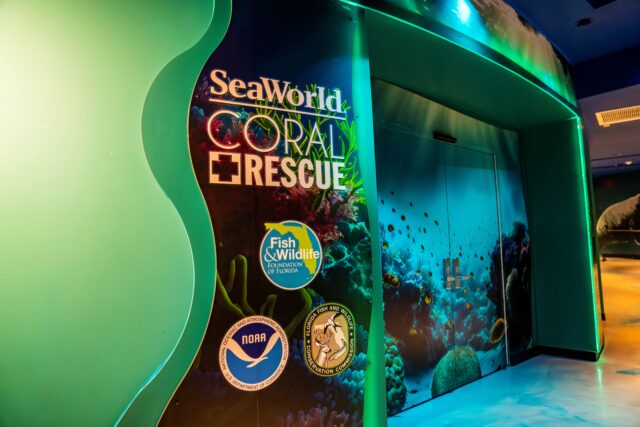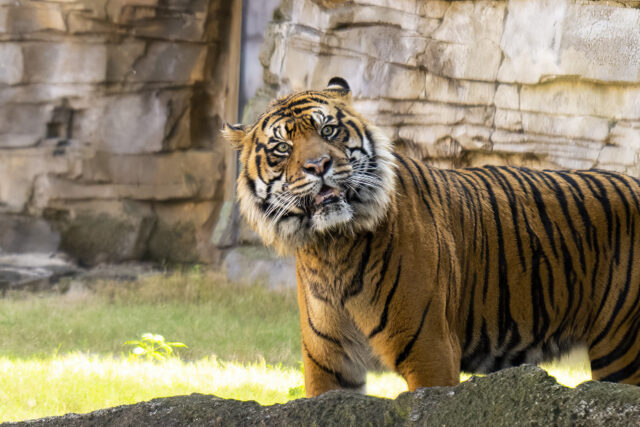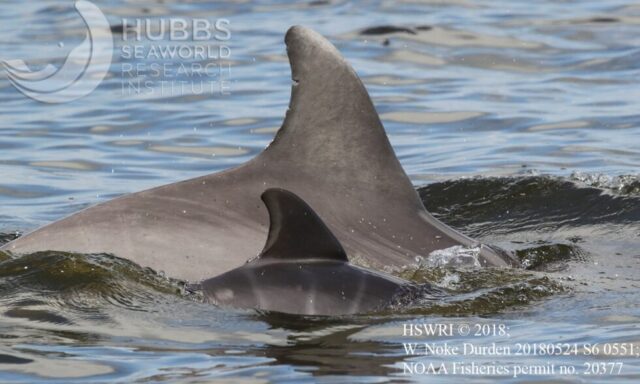SeaWorld Orlando’s animal care and veterinary teams are proud to announce the birth of a 150-pound, female Pacific walrus calf on 3 July, to mum Kaboodle and dad Garfield. This is 16-year-old Kaboodle’s second calf and the second calf born at SeaWorld Orlando. Both Kaboodle and her calf are doing well.
Under the watchful eyes of attentive animal care teams, it was determined that Kaboodle was not lactating and the calf had not received critical early nutrition. The team made the decision to intervene and is now providing 24-hour care including eight bottle feedings a day, socialisation and companionship, providing the opportunity for the calf to thrive.
“I am incredibly proud to watch our teams in action as they provide world-class care for Kaboodle and her calf,” said Gus Antorcha, CEO of SeaWorld Parks. “Our talented veterinarians and animal experts gave the best in prenatal care for Kaboodle, and now ongoing, round-the-clock care of mum and calf.”
SeaWorld’s walrus program plays an important role in educating and inspiring the public about these threatened animals and what we can do to help. In SeaWorld’s 55-year history of animal care, only four walrus calves have been born. With this birth, there are now 18 walruses living in six zoological facilities in the United States, giving the public the chance to see these animals up-close and learn how human activities impact their survival, as well as offering scientists and researchers the ability to better understand walrus biology that may be impossible to study in the wild.
Walruses face significant threats in the wild including the disappearance of floating sea ice due to warmer temperatures and a dwindling food supply. The SeaWorld & Busch Gardens Conservation Fund has provided research assistance on the Pacific walrus and the impact of habitat loss. Pacific walrus numbers reached record lows in the early 1960s but rebounded by the 1980s as a result of robust conservation efforts. Unfortunately, the population is once again in decline, primarily due to a change in habitat conditions. Walruses depend on stable sea ice for everything from food to providing safe havens for their young.
With the permission of the U.S. Fish and Wildlife Service, SeaWorld Orlando has raised 10 orphaned walrus calves throughout the past 50 years, including the new calf’s father, Garfield.
Dr. Stacy DiRocco, a senior veterinarian at SeaWorld Orlando, shared, “Our team is incredibly proud of the birth of this walrus calf — only the second ever at SeaWorld Orlando, and the team is providing around-the-clock care to monitor the health of both calf and mum.”
“Being able to share this story with our guests and the public is extraordinarily gratifying. Walruses need our help, and ambassadors like Kaboodle, her newborn calf and our Wild Arctic population help to tell an important story.”
Kaboodle and her calf remain behind the scenes during these first important weeks as the baby continues to gain weight and learn to swim. Guests to the park can still see the other residents of Wild Arctic, including more walruses and beluga whales.
Pacific Walrus Facts:
- Walrus gestation is 15–16 months
- Kaboodle gained approximately 300 pounds during her pregnancy
- Newborn calves weigh 45–75kg and are 3–4 feet long
- Kaboodle’s calf should gain 0.7–0.9 kg per day and 4–6 inches each month
- Walrus milk is composed of fat, protein and water, providing rich nutrients for a nursing calf
- At one-month old, newborn walruses are strong swimmers
- Walrus calves are born with whiskers, which aid in detecting the shellfish that are part of their diet
- Both males and females have large tusks that are used for defence, cutting through ice and getting out of the water


